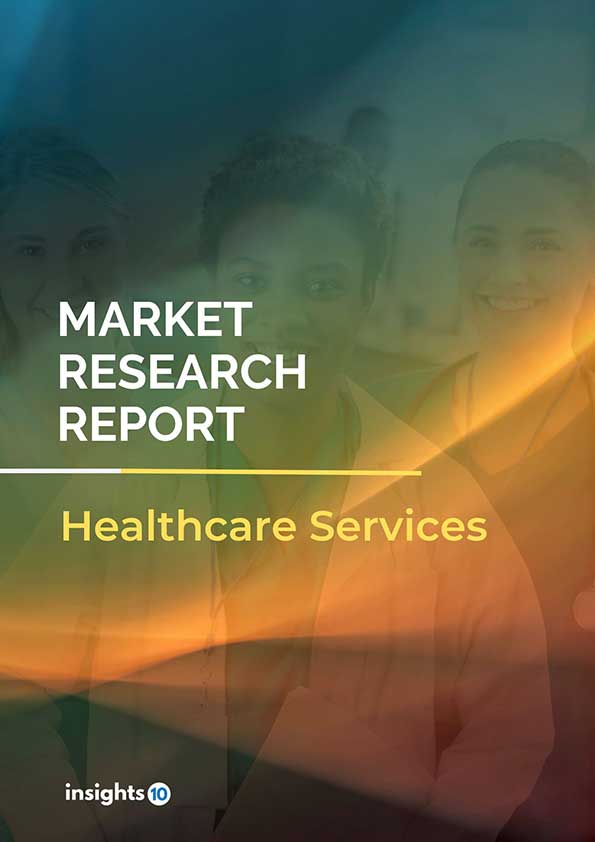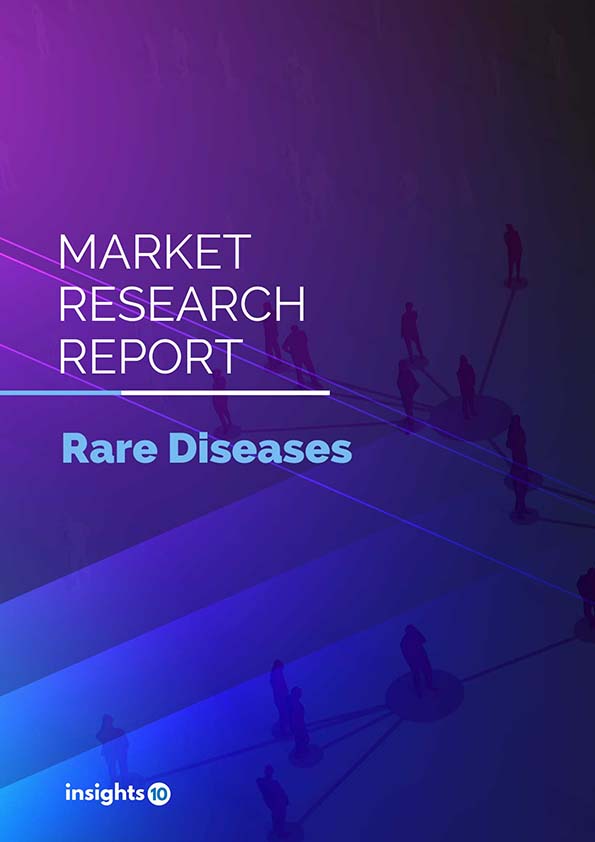Spain Connected Healthcare Market Analysis
The Spain-connected healthcare market is projected to grow from $1.28 Bn in 2022 to $8.89 Bn by 2030, registering a CAGR of 27.4% during the forecast period of 2022 - 2030. The main factors driving the growth would be the ageing population, increasing demand for patient-centred care, growing digital health ecosystem and favourable government policies. The market is segmented by type, function and by application. Some of the major players include Telefonica, Primum Health, HumanITcare, Medtronic, Philips Healthcare and Siemens Healthineers.
Buy Now

Spain Connected Healthcare Market Executive Summary
The Spain-connected healthcare market is projected to grow from $1.28 Bn in 2022 to $8.89 Bn by 2030, registering a CAGR of 27.4% during the forecast period of 2022 - 2030. In Spain, the amount spent on healthcare grew in 2019 from $2,740 per person or 8.99% of GDP to $2,711 per person or 9.13% of GDP. Compared to the EU average, Spain continues to spend less per person on healthcare. There is a growing disparity between Spain and the EU in terms of overall health spending, which is due to a slower growth rate during the past ten years.
The healthcare system in Spain combines public and private providers, with the public system offering all inhabitants universal coverage. The use of connected healthcare technologies has increased recently. The creation of digital health platforms that let people access their medical records, schedule appointments, and communicate with their healthcare providers is an illustration of a connected healthcare initiative in Spain. Additionally, these systems offer solutions for the remote monitoring of patients with long-term diseases like diabetes and high blood pressure.

Market Dynamics
Market Growth Drivers
The Spain-connected healthcare market is expected to be driven by factors such as
- Ageing population- The need for healthcare services is rising in Spain with the ageing population, especially for long-term care and the management of chronic diseases, both of which can be aided by linked healthcare technologies
- Increasing demand for patient-centred care- Chronic conditions like diabetes, hypertension, and cardiovascular disease pose a serious threat to Spain's health. The management of these illnesses can be improved, and healthcare expenses can be decreased, with the use of connected healthcare technologies such as remote patient monitoring systems
- Growing digital health ecosystem- Spain has a robust startup, accelerator, and investor community dedicated to creating and promoting connected healthcare technology. Spain also has a well-developed digital health ecosystem. The connected healthcare market is experiencing innovation and expansion in this ecosystem
- Favourable government policies- With programs like the Digital Plan for Spain and the National Health System's e-Health Strategy, the Spanish government has backed the creation and uptake of connected healthcare technologies
Market Restraints
The following factors are expected to limit the growth of the connected healthcare market in Spain:
- Fragmented healthcare systems- The national government and the regional governments share responsibilities for delivering healthcare in Spain's highly decentralised healthcare system. Because of this, implementing standardised solutions for connected healthcare would be challenging
- Limited funding- In Spain, there's limited government investment in connected healthcare and insufficient funding for healthcare technology. It could prove to be challenging for businesses to invest in creating novel products and services as a result
- Regulatory environment- Uncertainty exists regarding the legal and regulatory framework in Spain's evolving connected healthcare regulatory environment. This may prevent new businesses from entering the market and restrict market expansion
Competitive Landscape
Key Players
- Telefonica (ESP)- Telefónica is a multinational telecommunications corporation that offers a variety of connected healthcare solutions. The business provides IoT platforms, telemedicine, and remote monitoring services that let medical professionals gather and assess patient data
- Primum Health (ESP)- Primum creates mHealth technology to bridge the gap between healthcare providers. It provides a mobile telemedicine system for patient monitoring
- HumanITcare (ESP)- HumanITcare is a remote telemedicine platform that examines health data from devices connected to the internet of things such as smartwatches and smart scales
- Medtronic- Global medical technology business Medtronic offers a variety of medical products and services, such as telemedicine and remote monitoring options. The business is well-established in Spain and provides its services to hospitals there
- Philips Healthcare- Philips is a global pioneer in health technology, offering a wide range of linked healthcare products and services. The business provides services in the fields of medical imaging, telemedicine, and remote patient monitoring
- Siemens Healthineers- Siemens Healthineers is a renowned provider of medical imaging, laboratory diagnostics, and healthcare IT systems. The business provides a variety of connected healthcare goods and services, such as telemedicine and remote monitoring programs
Notable Deals
December 2022: Telefonica and Indra entered into a partnership. With the help of this arrangement, the two businesses will be able to deliver digital hospital solutions across the globe.
Healthcare Policies and Regulatory Landscape
The Spanish Agency of Pharmaceuticals and Medical Devices (AEMPS), which is in charge of examining and approving medical devices and digital health solutions, oversees the regulatory framework for connected healthcare in Spain. These solutions' quality, safety, and efficacy are evaluated by the agency, which also decides whether they qualify for marketing and funding.
The Spanish government has put in place a number of laws to encourage the adoption of telemedicine and e-prescriptions as well as other digital health solutions. A law allowing for the reimbursement of telemedicine services, such as remote consultations and chronic disease monitoring, was introduced by the government in 2019. The bill also permits reimbursement for e-prescriptions, allowing patients to get their medications online. A national electronic health record system (SEI) that allows the gathering and exchange of health data among healthcare providers has also been put in place by the government.
Reimbursement Scenario
The connected healthcare market in Spain is governed by a number of reimbursement laws that specify how healthcare providers are paid for their services. The Spanish national healthcare system, which offers comprehensive coverage to all citizens and permitted immigrants, is one of the country's main reimbursement policies. In this arrangement, government funds and patient co-payments are combined to pay healthcare professionals for their services. Private insurance firms also contribute significantly to Spain's connected healthcare market by providing their policyholders with a range of payment options.
Spain has also recently put into practice cutting-edge reimbursement procedures for online healthcare services like telemedicine and remote monitoring. These regulations are designed to encourage the use of digital health tools and increase patient access to care, especially for those who live in remote or underserved locations. To give an alternative to customary in-person visits, the Spanish government, for instance, has implemented payment laws that let healthcare practitioners bill for teleconsultations and remote monitoring services.
1. Executive Summary
1.1 Service Overview
1.2 Global Scenario
1.3 Country Overview
1.4 Healthcare Scenario in Country
1.5 Healthcare Services Market in Country
1.6 Recent Developments in the Country
2. Market Size and Forecasting
2.1 Market Size (With Excel and Methodology)
2.2 Market Segmentation (Check all Segments in Segmentation Section)
3. Market Dynamics
3.1 Market Drivers
3.2 Market Restraints
4. Competitive Landscape
4.1 Major Market Share
4.2 Key Company Profile (Check all Companies in the Summary Section)
4.2.1 Company
4.2.1.1 Overview
4.2.1.2 Product Applications and Services
4.2.1.3 Recent Developments
4.2.1.4 Partnerships Ecosystem
4.2.1.5 Financials (Based on Availability)
5. Reimbursement Scenario
5.1 Reimbursement Regulation
5.2 Reimbursement Process for Services
5.3 Reimbursement Process for Treatment
6. Methodology and Scope
Connected Healthcare Market Segmentation
By Type (Revenue, USD Billion):
Based on the Type the market is segmented into mHealth services, mHealth Devices, and E- Prescription
- MHealth services
- mHealth Devices
- E- Prescription
By FunctionType (Revenue, USD Billion):
- Remote patient monitoring
- Clinical monitoring
- Telemedicine
- Others (Assisted Living)
By Application Type (Revenue, USD Billion):
- Diagnosis and Treatment
- Monitoring Application
- Wellness and Prevention
- Healthcare management
- Others
Insights10 will provide you with the reports within 10 key parameters which are:
- Market Overview
- Market Growth Drivers & Restraints
- Epidemiology of Disease Type
- Market Segmentation
- Market Share
- Competitive Landscape
- Key Company Profiles
- Healthcare Policies & Regulatory Framework
- Reimbursement Scenario
- Factors Driving Future Growth
Based on our many years of experience, we believe that these are the parameters that are critical to decision-making for business stakeholders. Our focused approach to developing reports focused on 10 key parameters, enabled us to arrive at the name “Insights10”.

Stage I: Market Data Collection
Primary Interviews: We have developed a network of experts, freelancers, and researchers across countries through which we engage with local experts to gather key data points and assumptions about each market. We also engage regularly with some of the best market research agencies such as Atheneum, GuidePoint, GLG, etc. to conduct surveys and interviews, and build intelligence. We have language translators as a part of our team, who between them can cover 30+ languages allowing us to extract better local insights.
Secondary Data Collection: We have developed strong expertise and experience in secondary data collection methods for developing unique data sets and research material. We gather data from multiple reliable sources to maintain a high level of accuracy and consistency. The market data is analyzed and forecasted using appropriate statistical and coherent models. The report offers an overall analysis of the market size, growth, and market share as well as a segment-level analysis of the specific market. Our report includes precise, to-the-point information related to the overall market, competition, growth drivers, challenges, regulatory updates, and competition.
Data Sources: We have access to multiple highly reliable free and subscription data sources. We have many years of experience to understand which sources are more dependable for what and which to prefer for the reliable and latest information. The key sources of information include the following, but are not limited to:

Stage II: Market Data Analysis and Statistical Model
Market Trends: We generally look at macro parameters and micro indicators. The macro parameters include changes in government policies, demand and supply of the market, government intervention programs, and major market share. The micro indicators are GDP growth, market size, market volume, etc. We also understand nuances specific to each country like the US, Canada, India, Germany, etc., and have worked across 60+ countries and hence not only understand global trends but how these differ by country, how payment models, market structure, cultural parameters, etc. differ in each country.
Market Sizing and Analysis: Our expert data analytics team has created various market forecast models by employing the top-down approach i.e. starting with the large overall market and segmenting different areas and the bottom-up approach i.e. starting with population and epidemiology and rolling up based on spend, etc., estimating the size of the market, and distributing among the geographic and/or product segments.
The top-down approach is mainly used for new product forecasting and the bottom-up approach is used for demand estimation of any product for different countries summed up to form the total market. We are able to round off insights and build stronger forecasts because we always do both these methods and triangulate the final numbers.
The study on the market covers the analysis of the leading geographies such as Asia-Pacific, Africa, Europe, Middle East, North America, and Latin America for the period of 2022 to 2030. The qualitative analysis covers the industry landscape and trends, market opportunities, competitive landscape, and policy and regulatory scenario, and the quantitative analysis covers different market estimates and forecasts.
Data Triangulation & Validation:
Data triangulation of various sources and results of the research are carried out by benchmarking with reliable sources such as industry statistics, statistical databases, and company-level averages, etc.
We make sure to finalize the numbers in alignment with the market research. Firstly, our internal experts ensure thorough validation and checking to ensure accurate and precise analysis and then validation is also done using a multiple-data analysis model. Two-level validation is done and entails the finalization of the report scope and the way of representation pattern.
(1).png)
Stage III: Interpretation and Presentation
Analysis & Interpretation: The information gathered is then analyzed and synthesized. The second series of interviews are done if necessary to check and validate. The future opportunities are analyzed by understanding product commercialization and many other factors. It also comprises the analysis of data discrepancies observed across various data sources. Information procured from secondary and primary results is then, interpreted by considering the following parameters: (a partial list)
- Establishing market drivers and trends
- Analyzing the regulatory landscape to understand future growth
- Market Segment based analysis to obtain revenue/volume
- Analyzing current needs and determining penetration to estimate the market
Insights: Our reports deliver actionable insights backed with supporting facts and figures to assist you in achieving exemplary growth. Our in-depth analyses are interspersed with relevant insights and statistics to offer an executive-level view of a given market. The description helps in correlating many minor factors affecting the market and their impact on the different segments within the market.
Data curated from the analysis and interpretation are drawn to portray all in one consolidated report.
Presentation & Reporting: The market research report is presented in different forms such as charts by using a scientific approach for easy understanding. Historic, current, and future analysis is provided for each market in terms of both value and volume. The size of the market is interpreted in the US Dollar value and the respective unit, based on the product, for volume consumption.
The foreign exchange rates are calculated on the respective dates and for the respective regions covered in the study.
To request a free sample copy of this report, please complete the form below.
We value your inquiry and offer free customization with every report to fulfil your exact research needs.
This report addresses
- Intelligent insights to take informed business decisions
- Qualitative, acute and result oriented market analysis
- Market size and forecasts from 2022 to 2030
- Opportunities for expansion and in-depth market analysis
- Segmentation and regional revenue forecasts
- Analysis of the market share and competitive landscape
- Strategic Recommendations to chart future course of action
- Comprehensive Market Research Report in PDF and PPT formats
Need more?
- Ask our analyst how this study was put together to learn more
- Discuss additional requirements as part of the free customisation
- Add more countries or regions to the scope
- Get answers to specific business questions
- Develop the business case to launch the product
- Find out how this report may influence your business revenue








































